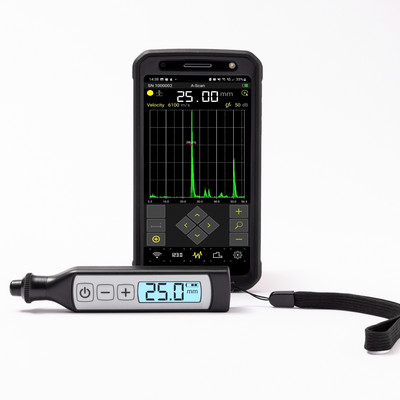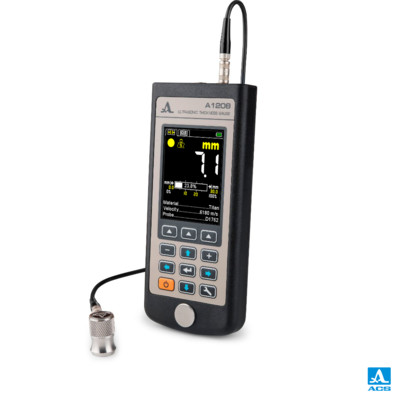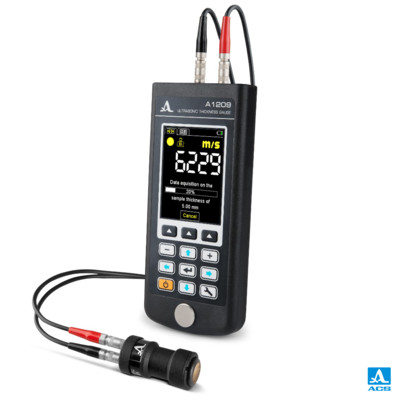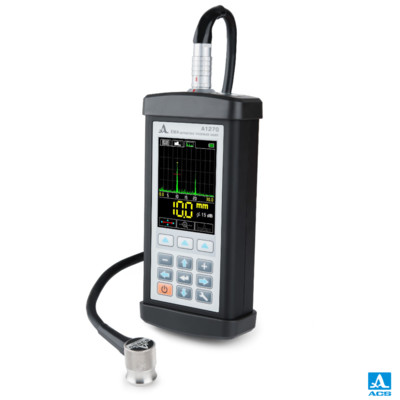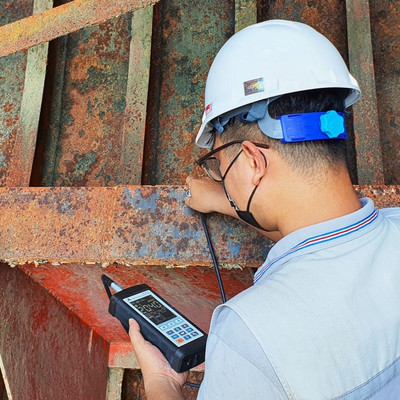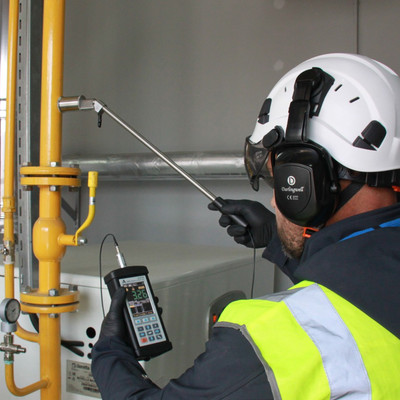Intended use:
Ultrasonic thickness gauges have been used for many decades to measure the thickness of a wide variety of products across various industries. This includes inspectors testing critical parts, such as checking pipes and tanks for in-service corrosion. In most cases, an ultrasonic thickness gauge is used to determine the thickness of a material when the inspector only has access to one side of the part, such as a pipe or tube, or when simple mechanical measurement is impossible or impractical due to the part's size or access limitations. The ability to quickly and easily measure thickness from one side without the need to cut parts is one of the major advantages of this technology.
Functional principle:
Ultrasonic thickness gauges work by precisely measuring the time it takes for a sound pulse generated by an ultrasonic transducer, to travel through a test piece. As sound waves reflect from material boundaries, timing the echo from the far side of the test piece can be used to determine its thickness, similar to how radar or sonar measures distance.


